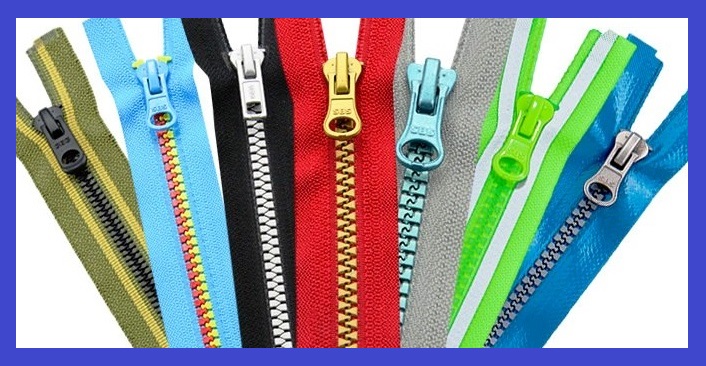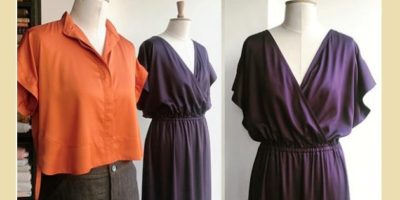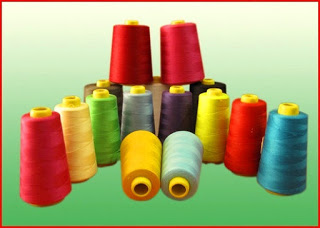Types of Zipper Materials
There are several colors and diversity we may found in zippers each of which has a different use. This classification is based on types, styles, fabrication, materials used etc. Based on materials used zipper may be metallic or synthetic. There is a very large variety of zippers.
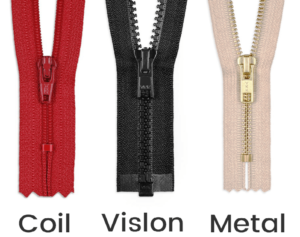
Zippers mainly made from three individual types of materials as explained below.
Difference in Zipper Material
Now we will introduce the different materials using to produce different kinds of zipper.
Coil zipper or Nylon Chain zipper
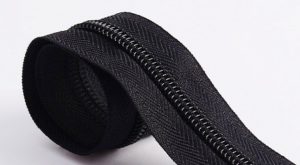
In 1955, under the label Op ti-lon, he developed the first mass produced nylon spiral zip fastener in the world. Could be further classified as a zipper with coiled element of filament (CFC), a zipper with Lateral Coiled Element (LFC) or CH (without chain) zippers. Coil zippers are usually known as nylon zipper. These zippers contain a bunch of hard plastic teeth, sewn onto the zipper tape serially. These zippers are capable of bending without breaking and are available in a variety of sizes (gauges). Coil zippers have many usages from fashion-wear to all types of tents and canvas goods and backpacks etc. Sometimes buyer may prefer waterproof nylon zipper due to the functional requirement.
Molded Plastic Chain
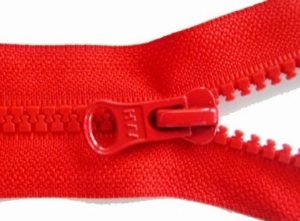
Usually, we call it vislon zipper. A vislon zipper known as Delran zipper, is one in which the elements are injection molded with polyacetal material (Industrial engineering of plastics). These plastic zippers have distinctively injected molded teeth, fused directly onto the tape serially of the zipper. Pure resins used to manufacture the molded plastic chain are incredibly strong. These zippers are usually strong and perfect for many medium and heavy garments or any other outdoor applications.
Metal Zipper Chain
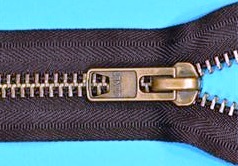
These are stronger zippers than others and find application on trousers, jeans pant etc. Zippers of these garments require durability, longevity, and strength. Interlocking elements are made of metals such as nickel, brass, zinc, steel etc. Sliders are frequently made of metal. In which the teeth and elements are made from alloy of aluminum, copper or nickel. On the specification of the user elements from the alloy of copper or nickel could be processed to acquire an antique finish. Metal zippers have been around quite a while.
The first metal zipper was invented in 1893. Metal zippers are available in four different finishes:
- A) Aluminum chain that is made by fitting parts together mainly from aluminum.
- B) Brass chains that are made of appropriate pieces together of brass, typically a blending of copper and zinc.
- C) Antique Brass chain builds from brass that is chemically dealt with to give the appearance of worn or tarnished brass.
- D) Black Oxidized chain makes from brasses that are chemically treated to give a black matte finish.
Gauge
The measure or dimension of the chain teeth is available in #3, #5, #8 & #10 (#15 gauge chain in molded plastic only). They are exposed to percentage along with their appropriate tape width.
Synthetic zippers: Nowadays numerous zippers are made of synthetic materials. Chain and teeth are molded from nylon and polyester. Some are made from continuous mono-filament coils. Synthetic zippers are more flexible, cheaper in price. They lend less abrasion and are more comfortable to use. Synthetic zippers offer wide range of colors. Chains and tapes may be easily dyed to match each other’s color.
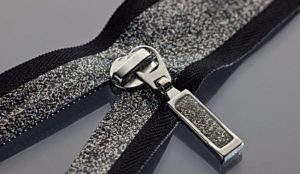
Separable zippers: These are zippers with two completely separate units of stringers. They have a bottom assembly (retainer) to engage each other so that they can work together as a single unit.
They find application in jacket fronts. Separable zippers are usually purchased as complete zipper units.

Non-separable zippers: These zippers find application in slacks, trousers, skirts, etc. They open in one direction. They have stopped at both ends so that the slider cannot go out of the chain. They can be purchased both as a complete unit and as a continuous chain. Continuous chains are available in the real form, and it can be cut to suggested length. Sliders and stoppers are also available what can be applied to the chain to form a complete unit during bulk production.
Exposed zippers: These zippers are visible from outside and are not hiding by fabric. Front zippers of some jackets are examples. Some ties exposed zippers extend aesthetic value to the zipper or to the garment.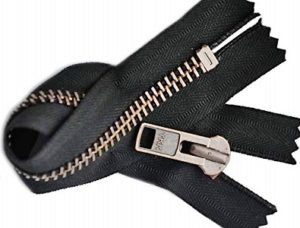
Enclosed or concealed zippers: Some zippers need to be not visible. Concealed zipper’s teeth are behind the tape. So they are covered by the fabric or a placket. This kind of zipper is common in skirts and dresses. Invisible zippers are usually one type of coil zippers. Front zippers for trousers, jeans pants are often concealed zippers. A fly of the trousers covers the zipper.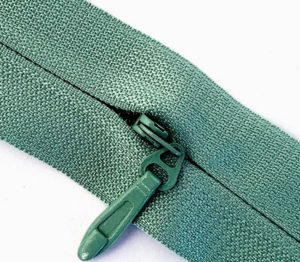
Waterproof Zipper: Waterproof zipper produced by nylon which exists high-density element to protect water. This zipper mainly used to protect rain water flow into the garment’s product. To make rain jacket, rain pant, waterproof bag or tent; garment’s designer may use this item. Price of these items is little bit more than other zipper items.

You may like: Growing history of Zipper
